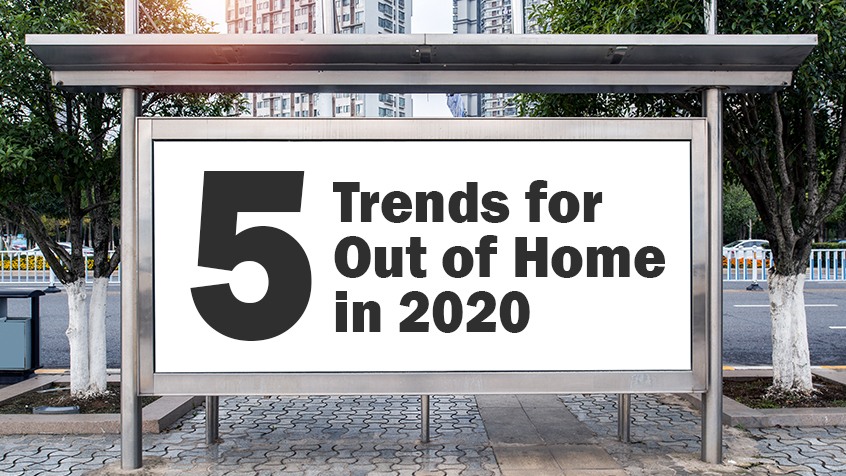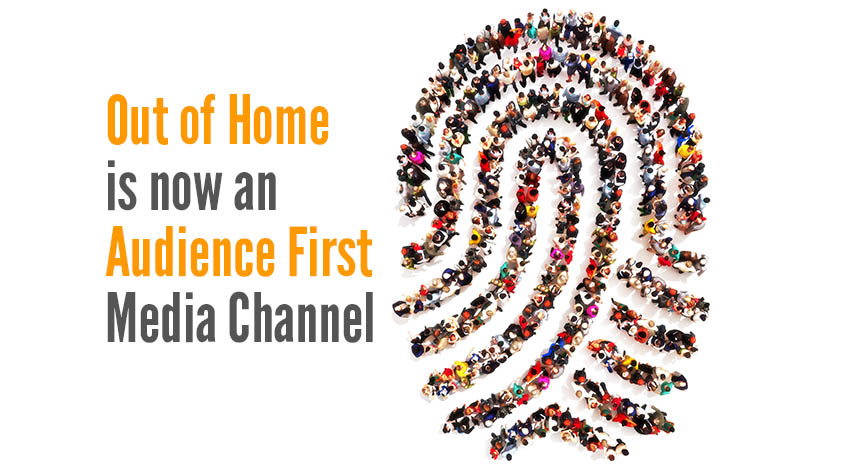Years from now we will probably look back at Peapod’s award winning 2012 out of home campaign (link) as being a watershed moment – the tipping point at which brands realized the potential for out of home media to function as a direct conduit to mobile online engagement.
Out of home is probably the oldest advertising medium and hasn’t changed significantly in hundreds, if not thousands, of years. But now it’s on the fast track to becoming one of the most modern. With smartphones and other mobile devices becoming more omnipresent everyday, there is a rapidly growing awareness of how out of home media can be leveraged as the new entry point for online consumer engagement.
“Purchasing decisions are often made away from home. Over two-thirds of travelers make their purchasing decisions at some location outside of their home over the course of a typical week; over half report making their purchasing decisions most frequently when they are not home.” Arbitron, 2013 Out of Home Advertising Study
And where are those people getting information when they are away from home? You may be doing it right now. We only need to look up from our own mobile devices to see that everyone else is looking down at their mobile device. Walking down the street, waiting at a bus stop, riding the subway, consumers are constantly using their smartphones and other devices for web access everywhere they go. As demonstrated by the fact that in late 2013 mobile browsing went over 20% for the first time, up from 7% just 2 years ago (link). This coupled with the facts that in 2012 smartphone ownership passed that of PCs (link), and that smartphone adoption is projected to reach almost 70% worldwide by 2017(link), demonstrates a significant shift in how and where consumers are using the web.
Evidence of the magnitude of this shift and how seriously the implications are considered by media companies came in March, when Clear Channel Outdoor announced the launch of its “Connect” program. This interactive mobile platform will equip over 70,000 of its out of home displays with dedicated NFC, QR or SMS technologies, allowing consumers to immediately access more information about the advertiser via their mobile device.
William Eccleshare, CEO of Clear Channel Outdoor, said, “We have made this investment because all our intelligence tells us this is what consumers want, to be able to engage with brands individually, immediately and effectively. We are bridging the online and offline worlds by combining our outstanding audience reach with personal engagement through mobile devices. The global rollout of Connect accelerates the metamorphosis of out-of-home advertising from being the oldest form of advertising to the most modern and creative.”
With mobile connectivity integrated directly into the displays, we are seeing the removal of the last barriers between the consumer and the connected brand experience. Now advertising leads seamlessly to engagement. Out of home now becomes more than just advertising media, it can act as a real world extension of a brand’s online environment. No longer just a means for message delivery, it is now a platform for content delivery. Brands can now capitalize on out of home to deliver coupons and other offers as well as entertainment and app downloads. This will also allow for a new level of real time tracking and customization for advertisers.
To help simplify this integration, in November 2013 the Outdoor Advertising Association of America (OAAA) published its “MOBILE & SOCIAL APPLICATION GUIDELINES”. The guidelines were put together by leaders from across the out of home industry, and were designed to “address advertisers’ needs and meet the growing demand for social and mobile interactive programs, these guidelines seek to enable the OOH market to better and more effectively integrate into multi-channel programs.”
Out of home media is taking the first steps down a path that will transform the industry in ways that we are only just beginning to understand. As both outdoor and mobile technologies continue to evolve, the way in which consumers interact with advertising is going to change dramatically. Out of home is a media that has survived in part because of its ability to adapt to changing times. That adaptability is exactly what will make it one of the most dynamic media formats of the future.





